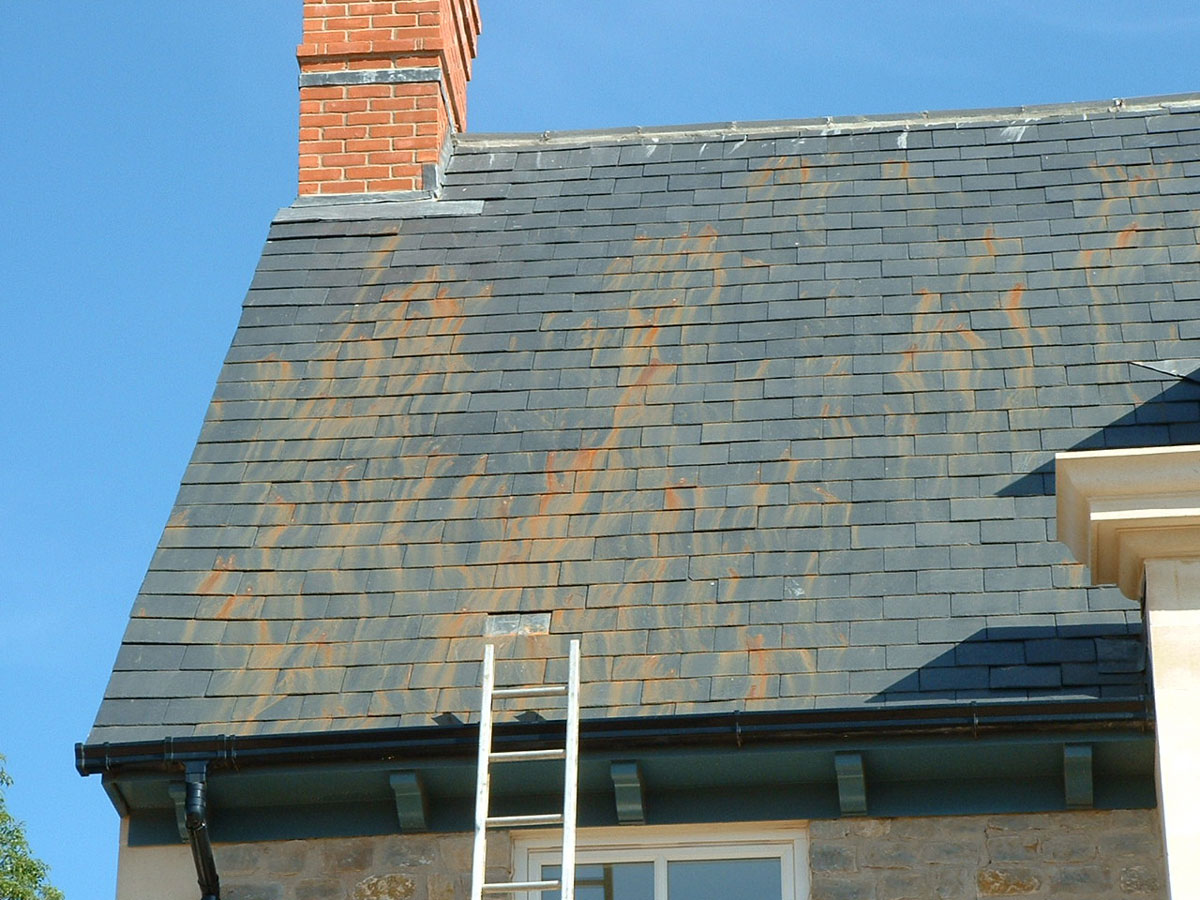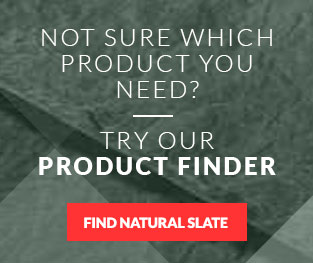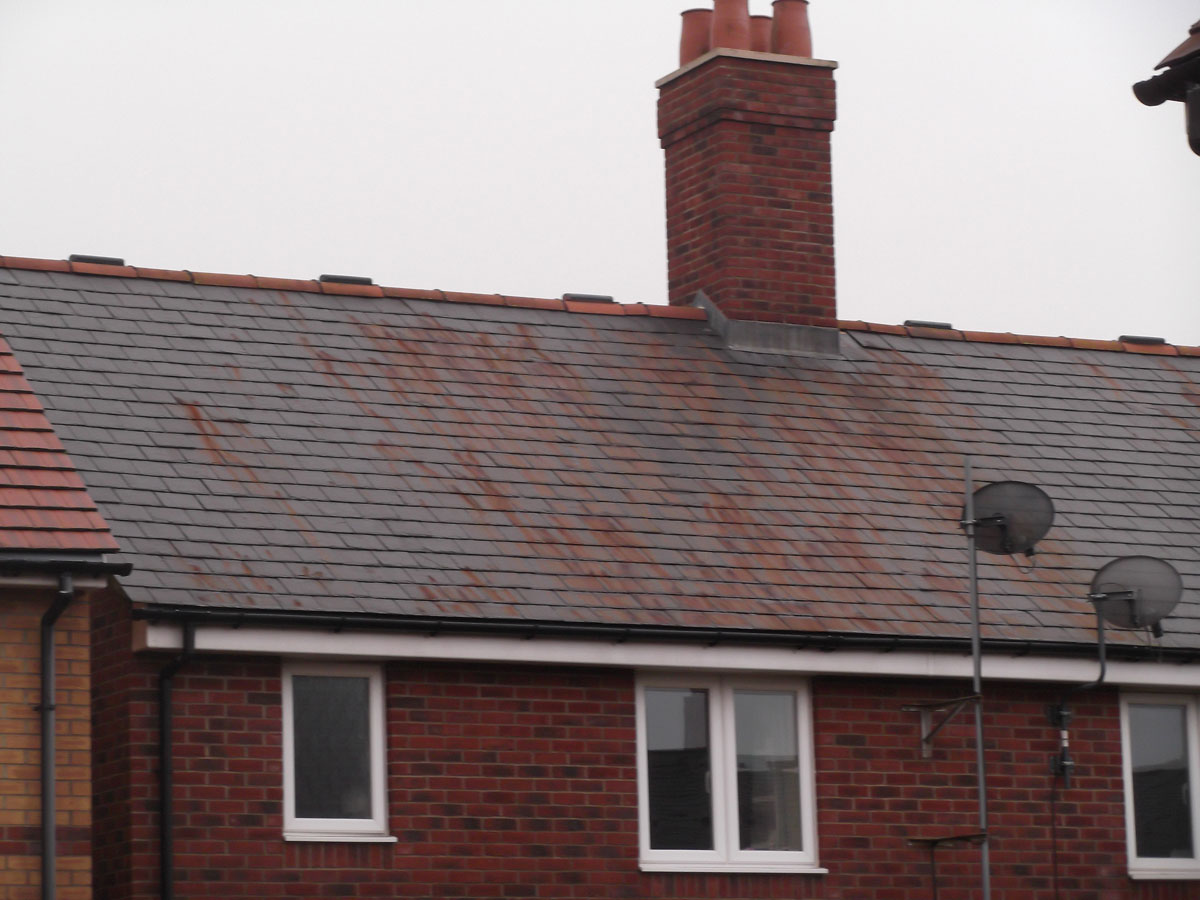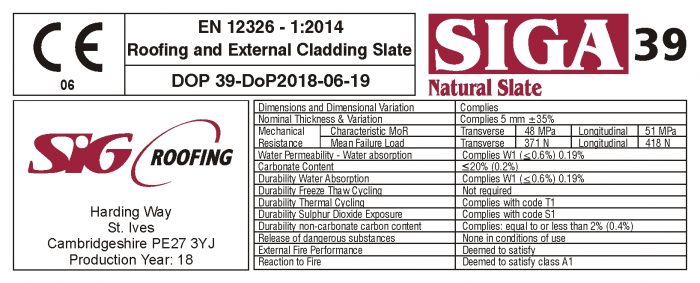One of the common questions we are asked about Natural Slate how to avoid the risk of rust in a natural slate roof. In this article we explain what pyrites are, how rusting is caused, and what you should do to avoid specifying or fitting a rusting slate roof.
What is Pyrite in Natural Slate?
All grey and blue-black natural slate contains metallic inclusions, wherever the source. These inclusions are commonly iron compounds which are given the generic name Pyrites or Iron Pyrites (roofers often call it Fool’s Gold).
In some cases, the pyrites are visible in the form of glistening crystals on the surface; in other cases, the particles are very small and difficult to see with the naked eye. For this reason, you can’t tell just looking at a slate, whether it has a lot of pyrites in it.
- All natural slates contain metal inclusions (pyrites)
- Not all pyrites can be seen with the naked eye
What is Natural Slate Rust?
Pyrites are a family of naturally occurring compounds which can differ in their chemical composition and structure, and therefore their characteristics (a bit like carbon which can be in the form of graphite, diamonds etc). For this reason, different pyrites can react differently when exposed to air and water – the environment they encounter on a roof.
Rust is a phenomenon when some pyrite compounds react with water to produce a rusty coloured stain. Metal inclusions in natural slate can lead to rust, but not always.
- Rust is rusty staining on a slate roof
- Metal inclusions can lead to a rusting slate roof – but not always
What happens when a Natural Slate Roof Rusts?
In minor cases, rust may simply cause a small amount of localised discolouration. In more serious cases a great deal of rust can be produced which will bleed down the roof. Serious rusting can produce holes in slates and ultimately, the failure of the roof.
It is important to recognise that the seriousness of the rust is not dependent on the visibility of metal inclusions, and visible pyrites in the slate should not be seen as an indicator that rust is likely, any more than a lack of visible pyrites should be seen as an indicator that rust is unlikely.
- Rust can mean a minor discolouration or major roof failure
- Visible pyrites is not a predictor of rust
All Natural Slate has Metallic Content
So, if all natural slate has metallic content, how come that all natural slates do not rust? As we have shown elsewhere on this site, slate is a natural product, which can vary hugely between quarries, and within a quarry (or mine). Selecting natural slate for quality, performance and consistency is a job best left to the professionals, and this applies to pyrites as well. If you want to be confident that your natural slates shouldn’t rust, you need to rely on a professional supplier with a reliable supply chain and a quality pedigree to advise you.
- Don’t try to predict rust in natural slate yourself
- Ensure you use a reliable slate supplier
 How to ensure your Natural Slates should not Rust
How to ensure your Natural Slates should not Rust
In our post on natural slate selection we set out four steps to selection of quality natural slate:
- The British Standard BS EN 12326 – the minimum standard and only the first step;
- Quarry Selection;
- SIGA Selection, and
- Sorting on site.
The first step in choosing quality natural slate that will not rust down your roof or damage the slate roof overall, is to ensure that the slates you choose have achieved the best Thermal Cycle Exposure Test result in accordance with BS EN 12326 – known as “T1”.
The Thermal Cycle Exposure Test assesses the likely levels of rust or oxidisation within the slate due to the presence of pyrites. After the test, T1 classified slates show no apparent change, or there may be some surface rust or other changes that neither affect the structure, nor form runs of discolouration.
All SIGA Slates have been tested to BS EN 12326 and achieved best classification T1. We do not supply lower classification slates, so you can be assured that SIGA slates will give the best possible performance and you are minimising the risk of a rusting roof.
What is more, you’ll be choosing a brand with an excellent pedigree. SIGA is one of the largest suppliers of Natural Slate in the world, with an enviable reputation for quality, traceability and consistency.
- Ensure your slates are classified T1 under BS EN 12326
- All SIGA slates are classified T1 for your peace of mind.
Have you got any questions about Pyrites and Rust? Why not ask them in the comments?





My daughter is purchasing a house which is 9 yrs old.
It has a black slated tiles which are unusually stained with a dark brown pigment which looks like rust staining.
Can you confirm if this would be detrimental to the roof/tile structure and what actions should we take.
Kind Regards
Tony
I read lots of websites. The page on rust in slates is one of the clearest I have ever read on any subject. Thanks.